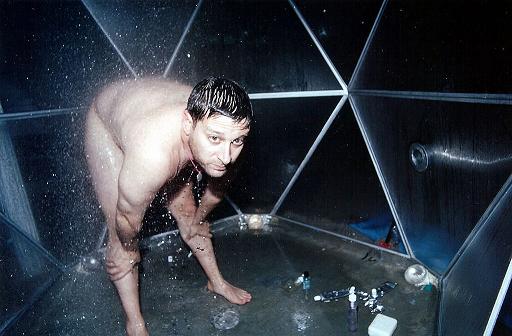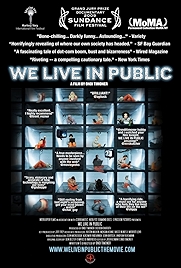A movie for every day of the year – a good one
12 November
Tim Berners-Lee publishes World Wide Web proposal, 1990
On this day in 1990, Tim Berners-Lee, an employee of the European research organisation CERN, published the formal proposal to create a more efficient information management system which would connect up hypertext documents on different computers running different operating systems, to be viewed by client-server applications (ie browsers). Building on a prediction by Arthur C Clarke that satellites would allow global access via console to vast amounts of information, telephony, video conferencing and so on, Berners-Lee took practical inspiration from the Dynatext electronic book system – which used a rigorous and declarative Standardised Generalized Markup Language (SGML) and required a licence for every document viewed – and altered it in accordance with his desire to promote accessible readership and, crucially, authorship, to create a Hypertext Markup Language (HTML) – a standardised rigorous, declarative format for writing and reading documents on the internet. Berners-Lee used a NeXT computer as a server and created software that could search for and read HTML documents – the first web browser, WorldWideWeb, which he completed on Christmas Day 1990. In truth, Berners-Lee’s original informal proposal had been drafted in 1989, though at the time it was intended purely for CERN use, to improve and replace a similar though centrally controlled information system called Enquire (which Berners-Lee had created in 1980). The 12 November 1990 document is important because it reflects Berners-Lee’s realisation of the importance of “a web of information nodes rather than a hierarchical tree or an ordered list” … “the texts are linked together”… “the network of links is called a web” … “the process of proceeding from node [ie text] to node is called navigation”… “nodes do not need to be on the same machine”… “nodes can in principle also contain non-text information such as diagrams, pictures, sound, animation etc”. His proposal to “create a common (simple) protocol for requesting human readable information stored at a remote system, using networks” caught on. Berners-Lee hadn’t created the internet – networks of interlinked computers already existed – but he had created the world wide web.
All quotes from the original document http://www.w3.org/Proposal.html
We Live in Public (2009, dir: Ondi Timoner)
“The internet is like this new human experience. At first everybody’s going to like it. But there will be a fundamental change in the human condition… one day we’re going to wake up and realise we’re just servants.” We Live in Public is the story of the author of that prescient quote, Josh Harris, a student in the 1980s who realised even back then that the future was net based. Harris set up Jupiter Communications, an online marketing company that existed before online was even a proper word. His next move was into chatrooms and before long he was providing 20% of the US’s billable chat. He got very rich. In 1993 he invented web TV, more or less, 12 years before YouTube was created. At somewhere round this point Harris starts turning up at corporate events dressed as a woman. Shortly thereafter he was eased out of the company he had created. His next project, in 1999, dreamt up while most people were still enthusing about the great liberating, democratising power of the internet, was to launch a quasi-fascistic Big Brother experiment, peopled by 100 volunteers who were given everything they could want – food, drink sex, the lot – in return for signing away their right to privacy and living underground. Harris had realised that people will fight, shit and fuck in public because the urge to be noticed is so strong. Then he invented We Live in Public – which was similar but focused just on him and his girlfriend – with cameras everywhere, in the cat’s dirt box, down the toilet pan, inside the fridge. Their entire lives together, the showers, the sex, the ugly breakup, was streamed to the internet. It’s a fascinating story and this quick description doesn’t capture the full weirdness of it, the way a revolutionary moment opened up for a particular type of character who is half artist, half huckster, and how Harris jumped in. And in jumping fried his personality to tatters. Director Ondi Timoner gets the access that’s necessary, though much of the story is told through old tapes (tapes?!) of the various experiments Harris launched. He’s a fascinating character because so bright and so flawed. And what he’s doing now, shown in a funny coda, is so remarkably different that it’s really worth saving for last.
Why Watch?
- Won the Sundance Grand Jury Prize
- Footage from over 15 years of shooting
- A rise and fall story for the internet age
- Because we really do live in public
We Live in Public – Watch it/buy it at Amazon
I am an Amazon affiliate
© Steve Morrissey 2013

